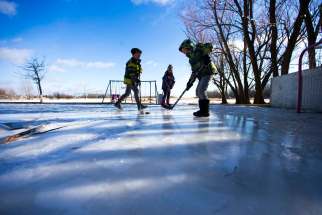E-safety pursuit requires young people
Read this article for free:
or
Already have an account? Log in here »
To continue reading, please subscribe:
Monthly Digital Subscription
$0 for the first 4 weeks*
- Enjoy unlimited reading on winnipegfreepress.com
- Read the E-Edition, our digital replica newspaper
- Access News Break, our award-winning app
- Play interactive puzzles
*No charge for 4 weeks then price increases to the regular rate of $19.00 plus GST every four weeks. Offer available to new and qualified returning subscribers only. Cancel any time.
Monthly Digital Subscription
$4.75/week*
- Enjoy unlimited reading on winnipegfreepress.com
- Read the E-Edition, our digital replica newspaper
- Access News Break, our award-winning app
- Play interactive puzzles
*Billed as $19 plus GST every four weeks. Cancel any time.
To continue reading, please subscribe:
Add Free Press access to your Brandon Sun subscription for only an additional
$1 for the first 4 weeks*
*Your next subscription payment will increase by $1.00 and you will be charged $16.99 plus GST for four weeks. After four weeks, your payment will increase to $23.99 plus GST every four weeks.
Read unlimited articles for free today:
or
Already have an account? Log in here »
Hey there, time traveller!
This article was published 20/08/2018 (2670 days ago), so information in it may no longer be current.
When the internet was new, we didn’t trust it. This was the era of the lone family computer, where chatroom and instant messaging activities could be monitored by parents trying to decode acronyms that are now part of our everyday lexicon. The internet was a Wild West, but it still had distinguishable borders.
Twenty-odd years on, and we’re asking the robots we’ve let into our homes how to make sangria. The family computer has been replaced by individual handheld, camera-equipped devices, one in every bedroom.
The goalposts for internet safety have moved. We started trusting the internet — with our passwords, our credit card numbers, our pictures, our lives. We let our guards down, as we do when something becomes not only familiar, but an indispensable part of our lives.
The internet can be used for good, but it can also be used to inflict serious harm.
The internet can be used for good, but it can also be used to inflict serious harm. Cyberbullying and the online sexual exploitation of children are two growing problems that require urgent action.
So, it is probably time Canada had a federal e-safety czar — one of the sound recommendations to come out of a federal consultation held earlier in the year.
In March, Public Safety Canada gathered together 70 frontline people, including police, policy-makers, industry representatives, victim-service providers and academics, for two days of meetings on how to combat exploitation.
Among the other recommendations: raising awareness of online child exploitation, conducting research on how to better meet the needs of victims, and working with the tech sector to better protect children.
A federal e-safety czar could provide “a co-ordinated approach to promoting online safety of all Canadians,” according to the summary.
Absent from the list of people who participated in the federal consultation: actual young people. Those who are most vulnerable can teach us the most.
While federal strategies are certainly necessary… understanding how young people engage with the internet will be a critical part of protecting them from its ills.
By now, a generation of people has grown up not knowing about life without the internet. The world changes at a faster clip than it used to, and the people charged with keeping kids safe — parents, guardians and educators, many of whom are not digital native — have much more to keep up with.
Teens and tweens aren’t using Facebook anymore. They’re on Instagram and Snapchat, and a whole host of other apps older folks probably haven’t heard of yet. It’s not uncommon for kids to have multiple Instagram accounts. They’re content creators, influencers and publishers.
The internet is how they socialize. And some are using social media to engineer next-level bullying campaigns, while others don’t understand that distributing someone else’s naked photos is a criminal offence.
We shouldn’t fear the internet, nor should we advocate for abstinence from it. But we do need to be vigilant, critical and educated.
While federal strategies are certainly necessary — especially where legislation is concerned — understanding how young people engage with the internet will be a critical part of protecting them from its ills. That will involve taking the time to talk to them about how they use the internet, and what their specific fears and concerns are.
It will also involve caregivers and educators educating themselves; as the Facebook data scandal clearly illustrated, adults, too, have gaps in knowledge when it comes to internet safety.
We shouldn’t fear the internet, nor should we advocate for abstinence from it. But we do need to be vigilant, critical and educated.
We could ask ourselves this: what has the internet done to earn our trust? Finding the answer might be easier if we talk to the young people we’re trying to protect.










